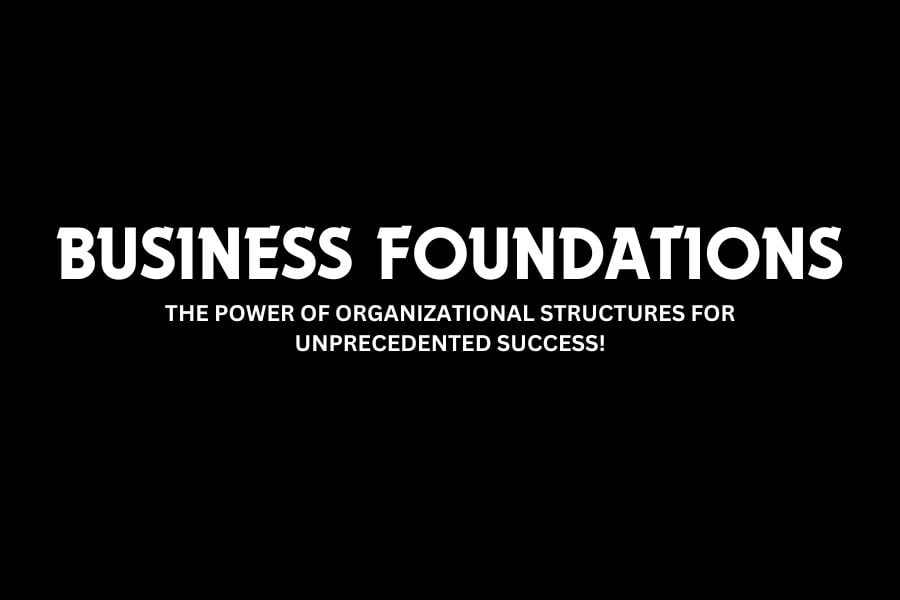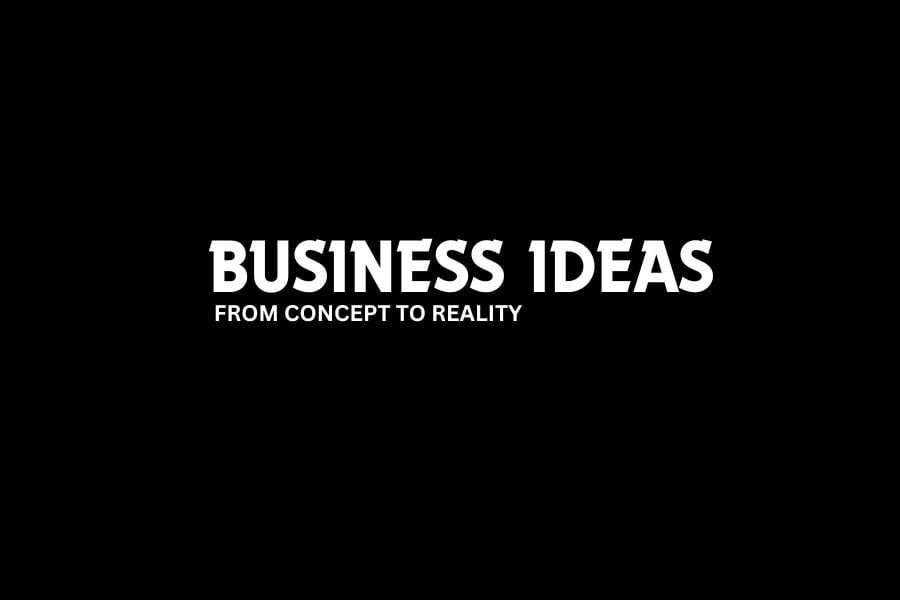Business Foundations: Empower your entrepreneurial journey by navigating through the diverse landscape of business structures. From sole proprietorships to corporations, gain profound insights into advantages, disadvantages, and legal considerations for strategic decision-making.

The Business Foundation: A Exploration of Various Forms of Business Organization
Embarking on the entrepreneurial journey requires not only passion and vision but also a profound understanding of the diverse organizational structures that underpin businesses. From the simplicity of sole proprietorships to the complexity of corporations, each form of business organization comes with its unique set of advantages, disadvantages, and legal intricacies. This comprehensive guide aims to empower entrepreneurs with in-depth insights, facilitating informed decision-making critical for the success and sustainability of their ventures.
1. Sole Proprietorships: The Foundations of Independence
In the realm of business structures, sole proprietorships stand as the epitome of simplicity and individual autonomy. This form entails a single individual owning and managing the entire enterprise, ensuring swift decision-making and direct control over operations. The advantage lies in its straightforwardness, allowing for agility in response to market changes. However, the simplicity comes at a cost—sole proprietors bear the entirety of financial and legal responsibilities, exposing them to personal liability. Entrepreneurs opting for this structure must carefully weigh the autonomy it offers against the potential risks.
2. Partnerships: Harnessing Strength in Collaboration
Partnerships represent a collaborative approach, where two or more individuals come together to share responsibilities, resources, and rewards. This dynamic structure often results in a diversified skill set and shared financial burden, fostering mutual support. The advantages include pooled resources and collective decision-making. However, the very essence of collaboration can pose challenges in decision-making processes, demanding effective communication and a well-defined partnership agreement to mitigate potential conflicts. Entrepreneurs entering partnerships must establish clear expectations and responsibilities from the outset.
3. Corporations: Building Robust Structures for Growth
Corporations, with their distinct legal entity status, provide a sophisticated framework suitable for large-scale enterprises. The advantages are manifold, including limited liability for shareholders, perpetual existence, and access to capital markets. The structured governance system involving shareholders, directors, and officers ensures a clear delineation of roles. However, the advantages come hand in hand with complexities—corporations face stringent regulatory requirements, extensive record-keeping obligations, and the potential for double taxation. Entrepreneurs considering this structure must navigate these challenges with careful consideration and strategic planning.
Empowering Decision-Making: The Crucial Considerations
Delving into the advantages, disadvantages, and legal considerations of each organizational form reveals nuanced aspects that demand meticulous consideration.
1. Advantages:
Strategic Decision-Making (Sole Proprietorships): Sole proprietorships, as the most straightforward form of business organization, offer entrepreneurs unparalleled autonomy in decision-making. In this structure, the business owner holds complete control, allowing for swift responses to market changes and strategic shifts without the need for extensive consultation. This agility can be a significant advantage in dynamic business environments.
Shared Responsibilities (Partnerships): Partnerships thrive on the principle of shared responsibilities, distributing the burden among multiple individuals. This fosters collaborative problem-solving and ensures that decisions are made collectively. Partnerships often benefit from the diverse skills and expertise of each partner, creating a well-rounded approach to addressing challenges and opportunities. Effective communication and a clear understanding of each partner’s role are crucial for successful collaboration.
Structured Growth (Corporations): Corporations provide a structured approach that is particularly suitable for businesses with aspirations for large-scale growth and capital investment. The separation of ownership and management, along with the ability to issue stocks, allows corporations to attract external investment. Additionally, the corporate structure provides a platform for long-term planning, strategic expansion, and diversification of business operations.
2. Disadvantages:
Financial Liability (Sole Proprietors and Partnerships): Sole proprietors face unlimited personal liability, meaning their personal assets are at risk in the event of business debts or legal issues. Similarly, partnerships may grapple with shared financial burdens, where the personal assets of each partner could be at risk. Understanding and managing financial liability is crucial for entrepreneurs to protect their personal assets while operating their businesses.
Regulatory Complexity (Corporations): While corporations offer limited liability to their owners, they also come with complex legal and regulatory obligations. Compliance with corporate governance, financial reporting, and tax regulations requires meticulous attention. Navigating this regulatory landscape demands the expertise of legal professionals and financial advisors to ensure adherence to laws and regulations.
3. Legal Considerations:
Liability Protection (Corporations): One of the primary advantages of corporations is the liability protection they offer to their owners. Shareholders are shielded from personal liability, meaning their personal assets are generally not at risk due to business debts or legal actions against the corporation. This feature provides a significant layer of protection for individual shareholders.
Formal Agreements (Partnerships): Partnerships necessitate well-drafted partnership agreements to define roles and responsibilities clearly. These formal agreements are vital in preventing misunderstandings, conflicts, and legal disputes among partners. Key components include profit-sharing arrangements, decision-making protocols, and provisions for dispute resolution. A carefully crafted partnership agreement serves as a foundational document for the smooth operation of the business.
the considerations mentioned highlight the nuanced aspects that entrepreneurs should carefully weigh when choosing an organizational form. Each structure comes with its own set of advantages and disadvantages, and understanding these factors is crucial for making empowered decisions that align with the business’s goals and aspirations. Seeking professional advice and conducting thorough research are essential steps in navigating the complexities of business organization.
Conclusion: Informed Choices for Sustainable Ventures
This exploration of various forms of business organization transcends theoretical understanding; it serves as a strategic guide for entrepreneurs charting their course in the business landscape. The choices made in selecting an organizational structure shape not only the internal dynamics but also the trajectory of the business in the competitive market.
Armed with comprehensive insights into the advantages, disadvantages, and legal considerations of each form, entrepreneurs can navigate the business landscape with confidence and foresight. In making informed choices, they lay the foundations for sustainable and thriving ventures, equipped to overcome challenges and capitalize on opportunities in the dynamic world of commerce.
Also Read:
- Unveiling the Essence of Business Ideas: From Concept to Reality “10 Powerful Business Concepts”
- Reviving Centuries: Unveiling the Epochs of Business Evolution with Power and Precision
FREQUENTLY ASKED QUESTIONS
Q1: What factors should I consider when choosing a business structure?
Consider the level of autonomy desired, financial liabilities, collaborative needs, and long-term growth plans to align the chosen structure with your business goals.
Q2: How does the choice of business structure impact decision-making?
The chosen structure affects decision-making speed, collaborative dynamics, and regulatory obligations, influencing the overall trajectory of the business.
Q3: Is there a one-size-fits-all approach to selecting a business structure?
No, the choice depends on individual business goals, risk tolerance, and growth aspirations. Each structure has its own set of advantages and disadvantages.
Q4: What legal considerations are crucial when forming a partnership?
Partnership agreements defining roles, responsibilities, profit-sharing, and conflict resolution mechanisms are vital to avoid potential legal conflicts.
Q5: How do corporations provide a structured approach for growth?
Corporations offer structured governance, limited liability, and access to capital markets, making them suitable for large-scale growth and investment.


